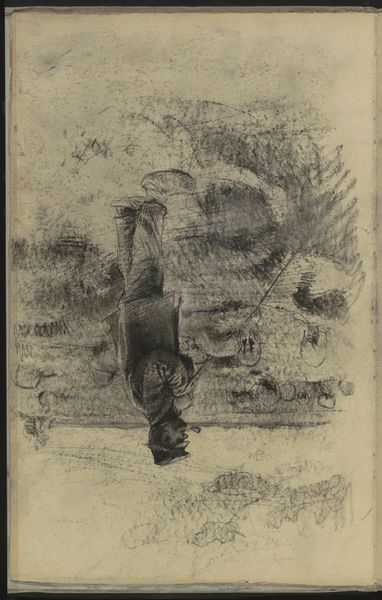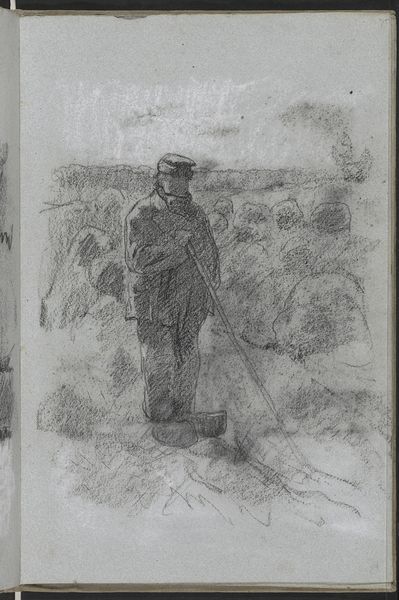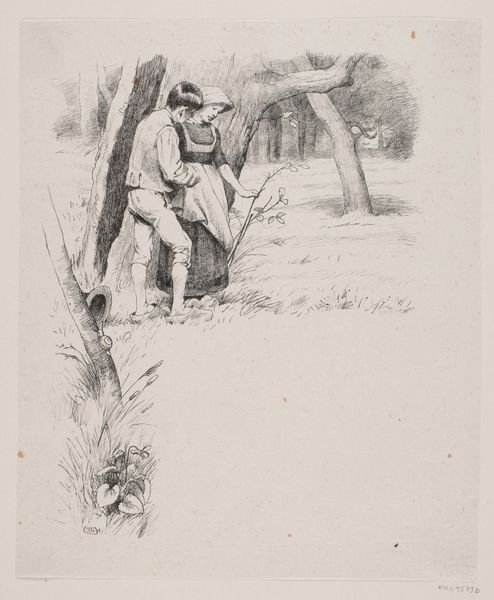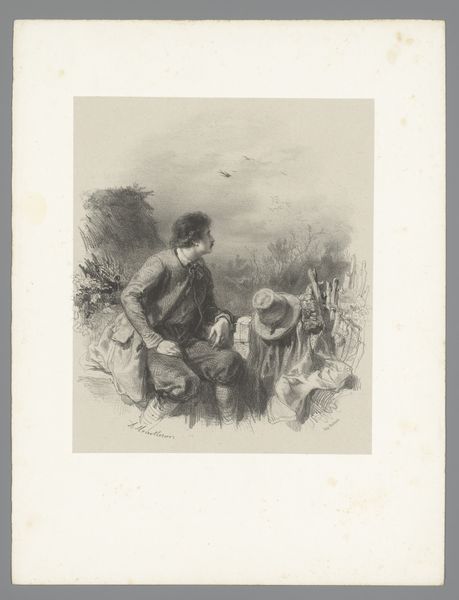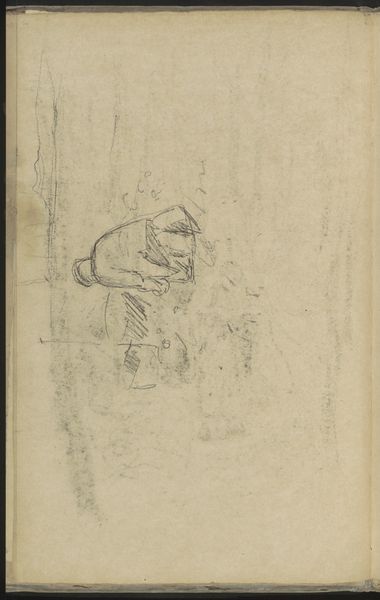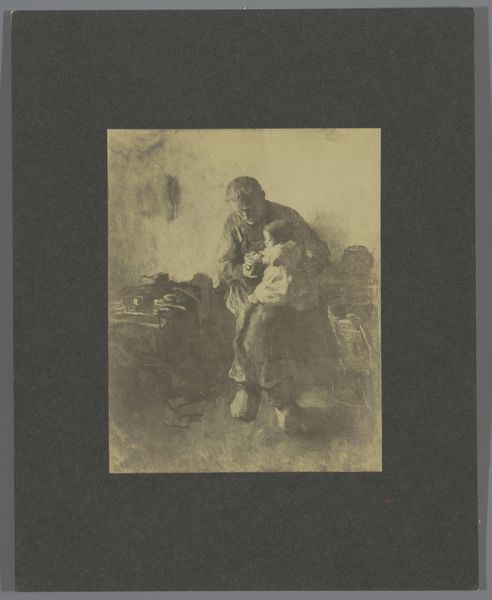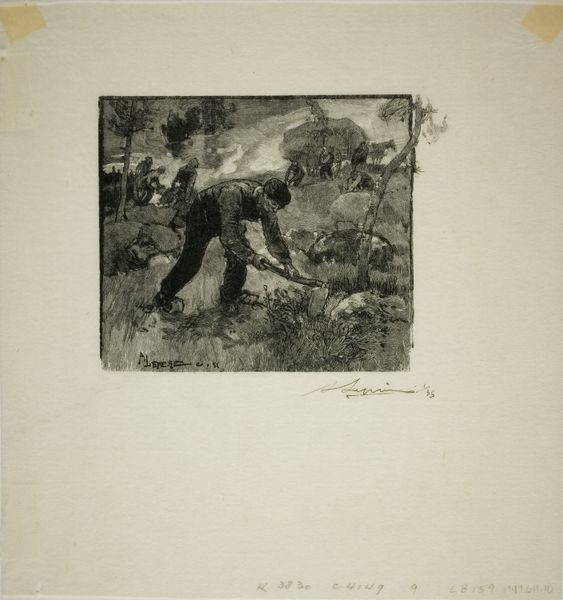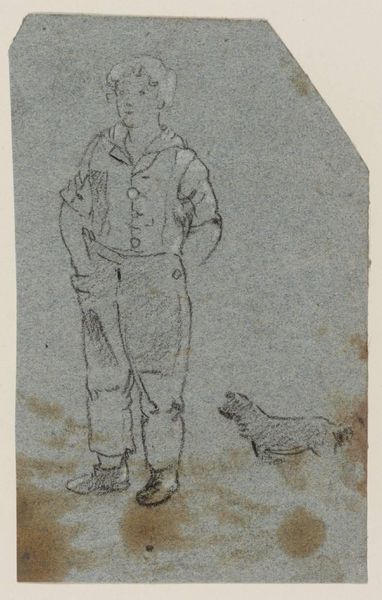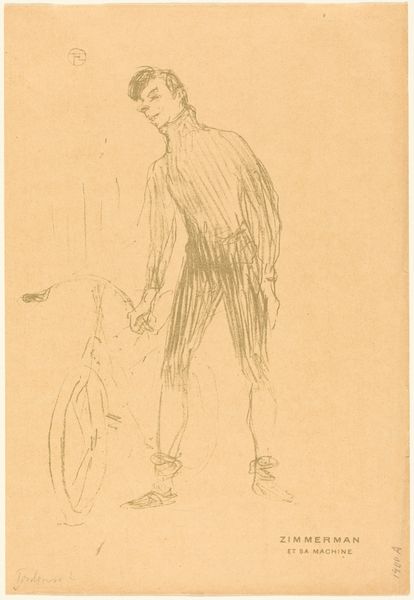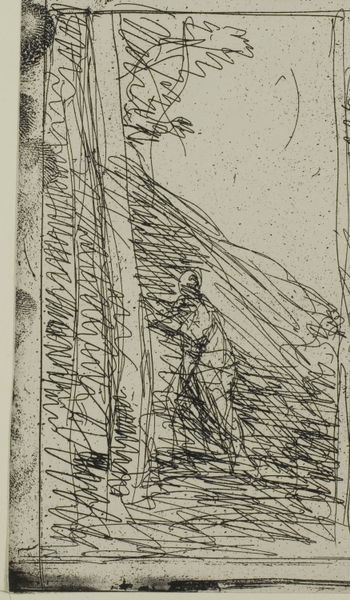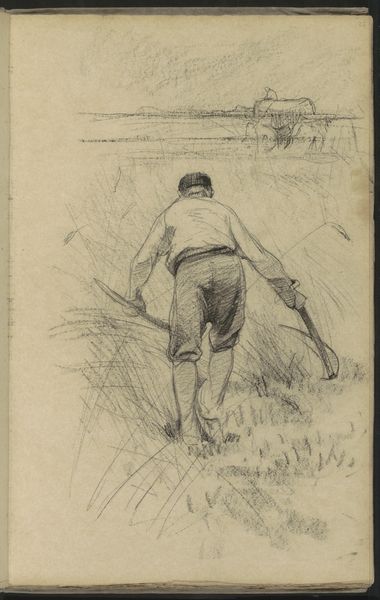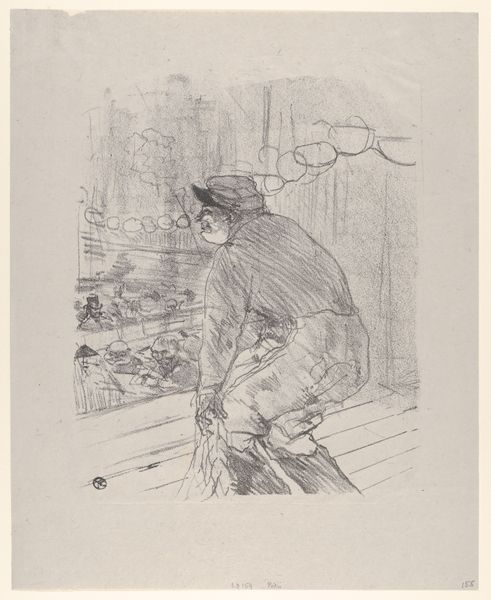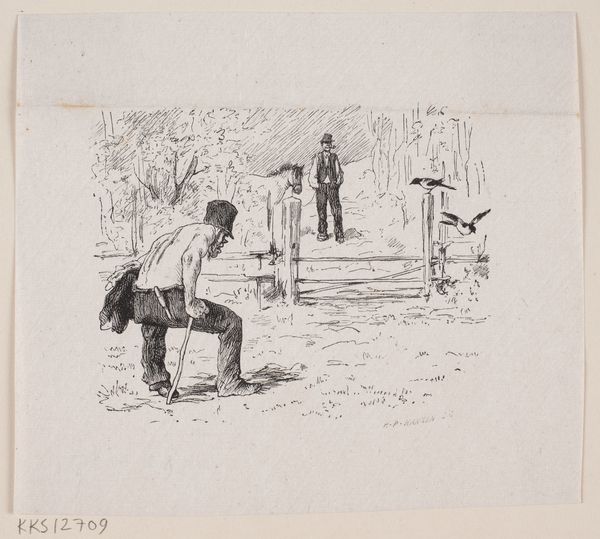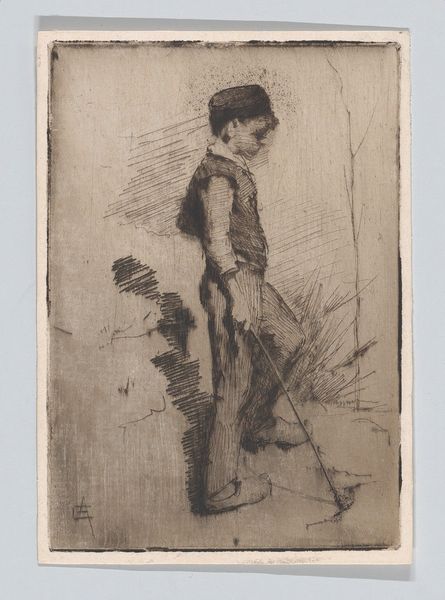
drawing, pencil
#
drawing
#
dutch-golden-age
#
impressionism
#
landscape
#
pencil
#
genre-painting
#
realism
Dimensions: height 243 mm, width 181 mm
Copyright: Rijks Museum: Open Domain
Curator: Looking at Willem Witsen's drawing, dating back to around 1886 and held here at the Rijksmuseum, titled "Boer in het veld, zeis wettend"—"Farmer in the Field, Sharpening a Scythe"—I'm immediately struck by its stark simplicity. What's your initial impression? Editor: I find it incredibly evocative. There's a roughness to the materiality of the pencil strokes, which emphasizes the labor and perhaps the hardships inherent in agrarian life. Curator: Yes, that's captured brilliantly through Witsen's masterful use of line. Observe how the density of the strokes creates a palpable sense of volume and texture. The farmer himself is composed of relatively few lines, yet conveys mass. Editor: And the material condition of the drawing itself—the type of paper, the graphite grade, they all speak to a particular time and place, impacting what could be produced, and in what context the artwork was eventually viewed. Were such drawings made in preparation for a painting, or were they themselves ends in their own right? Curator: That is difficult to say without firm proof. I would lean toward the observation of light, form and volume—key pillars of Impressionism. But the thematic focus on labor connects to the broader social realist movements of the late 19th century. He captures the individual's engagement with nature, elevating it to the subject of the work. Editor: Exactly. Consider how the image functions as a document of rural life, perhaps even a critique of the prevailing social order by focusing on the farmer’s relationship to the land. We might look into who the artist knew, who the patron may have been—what needs they wished to express in image, word, or deed. Curator: The sparse details further accentuate the theme—drawing our eye toward the farmer and the sharp blade; a synecdoche for labor itself. The landscape almost disappears, as lines give way to negative space, reinforcing a visual hierarchy within the composition. Editor: Right. It is a material reduction that actually amplifies its social weight and implications. The roughness gives a visual reminder of the difficulty of that life, both literally, and in how the art speaks and communicates those labors. Curator: It provides a keen visual insight into artistic and social developments from the 19th century. Editor: It makes me consider how the work asks us to see labor, art and the world, and what we must change in response to what the work suggests to us, through the way that it came into existence and survives today.
Comments
No comments
Be the first to comment and join the conversation on the ultimate creative platform.
